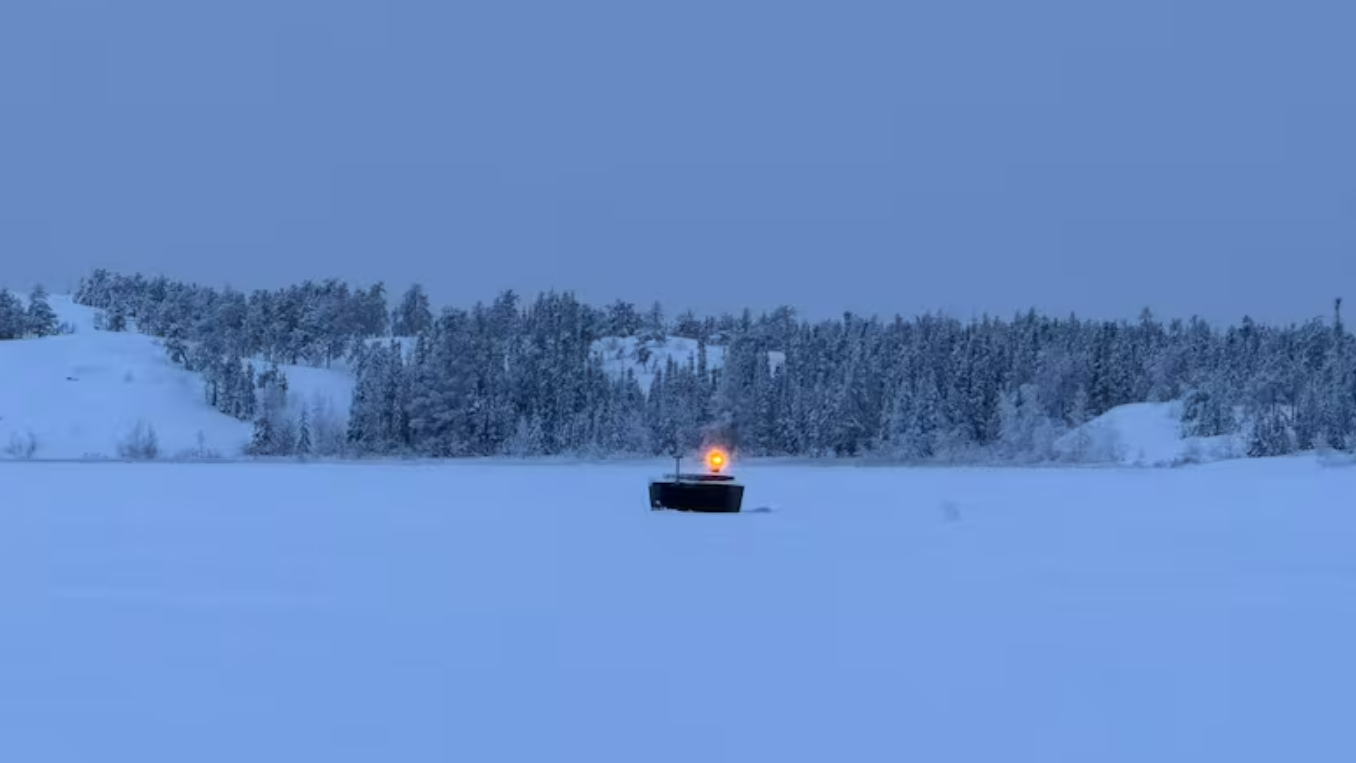Aerator that could restore fish in Yellowknife’s Frame Lake turned on

By Nadeer Hashmi
An aerator recently began pumping air into the water of Frame Lake in Yellowknife, and the mining company that set it up hopes it could bring fish back to the long-dead lake as early as 2026.
Rio Tinto, which operates the Diavik diamond mine in the N.W.T., installed the device in the summer and turned it on last month. Its purpose is to increase oxygen levels in the lake.
The project fulfills Rio Tinto’s requirement, laid out under its fisheries authorization, to compensate for habitat loss caused by Diavik’s construction. It has faced numerous delays since it was first announced, due to COVID-19 pandemic and the 2023 wildfires.
Sean Sinclair, Diavik’s closure manager, said the company will monitor the aerator over the next two winters at least before taking any next steps. If everything goes as planned, he said, they could consider reintroducing fish in a year and a half.
“We would also have to go through some additional permitting steps prior to actually reintroducing fish,” he said.
How it could help
Frame Lake hasn’t had fish in it since at least the 1970s. High arsenic levels from nearby gold mining operations have also made the lake harmful to human health for decades.
Gila Somers, an aquatic quality scientist with the territory’s Department of Environment and Climate Change, says oxygen levels in Frame Lake are too low for aquatic life to survive.
In an email to CBC News, she explained that nutrient pollution in the water creates algae blooms that consume most of the oxygen.
Sinclair said that every winter once there’s ice on Frame Lake, the oxygen level in the water goes down to zero. That “obviously creates conditions that would not be sustainable for a fish population,” he said.
But Somers said that aerators – like the one Rio Tinto has installed – could help restore Frame Lake.
“These devices work by moving the water and adding oxygen from the air, which helps increase the amount of dissolved oxygen that fish and other organisms need to survive,” Somers said.
“In southern Canada, they have been successfully used to improve water quality and prevent fish kills.”
Sinclair said Rio Tinto has started a sampling program and will check how the aerator is functioning throughout the winter and the summer. He said initial results about its winter performance will come in the summer.
Public should avoid approaching the device
The aerator has a beacon light flashing on top for visibility.
Sinclair said there are other demarcations on it as well, to make sure people – snowmobilers in particular – can see it.
He said the device was designed so as not to affect the thickness of the ice around it, but he’s asking people to avoid approaching it anyway.
“We would still ask people not to, you know, go up to it, play with it, fiddle with it, things like that,” Sinclair said.
Related stories from around the North:
Canada: Canada ratifies international moratorium on commercial fishing in the High Arctic, Radio Canada International
Finland: What a Saami-led salmon rewilding project in Arctic Finland can teach us about Indigenous science, Eye on the Arctic
Greenland: Greenland Atlantic salmon catch numbers well above new quota, CBC News
Norway: Oslo and Moscow safeguard fishery cooperation, The Independent Barents Observer
Russia: Norway and Russia agree to slash cod quotas in Barents Sea, The Independent Barents Observer
Sweden: Environmentalists seek solutions to ghost net problem in Baltic Sea, Radio Sweden
United States: U.S. gov clears path for genetically engineered salmon, Alaska Public Media


